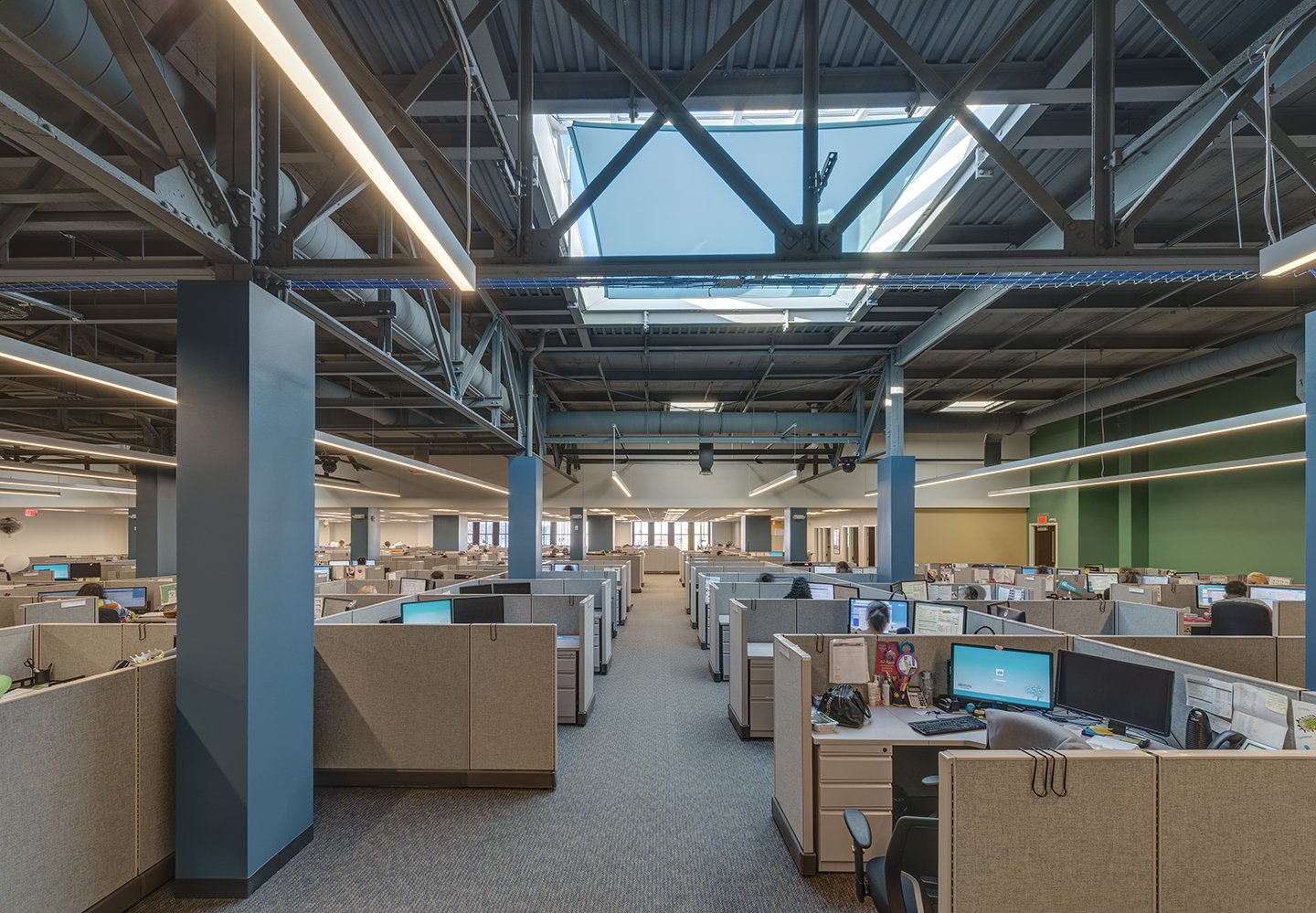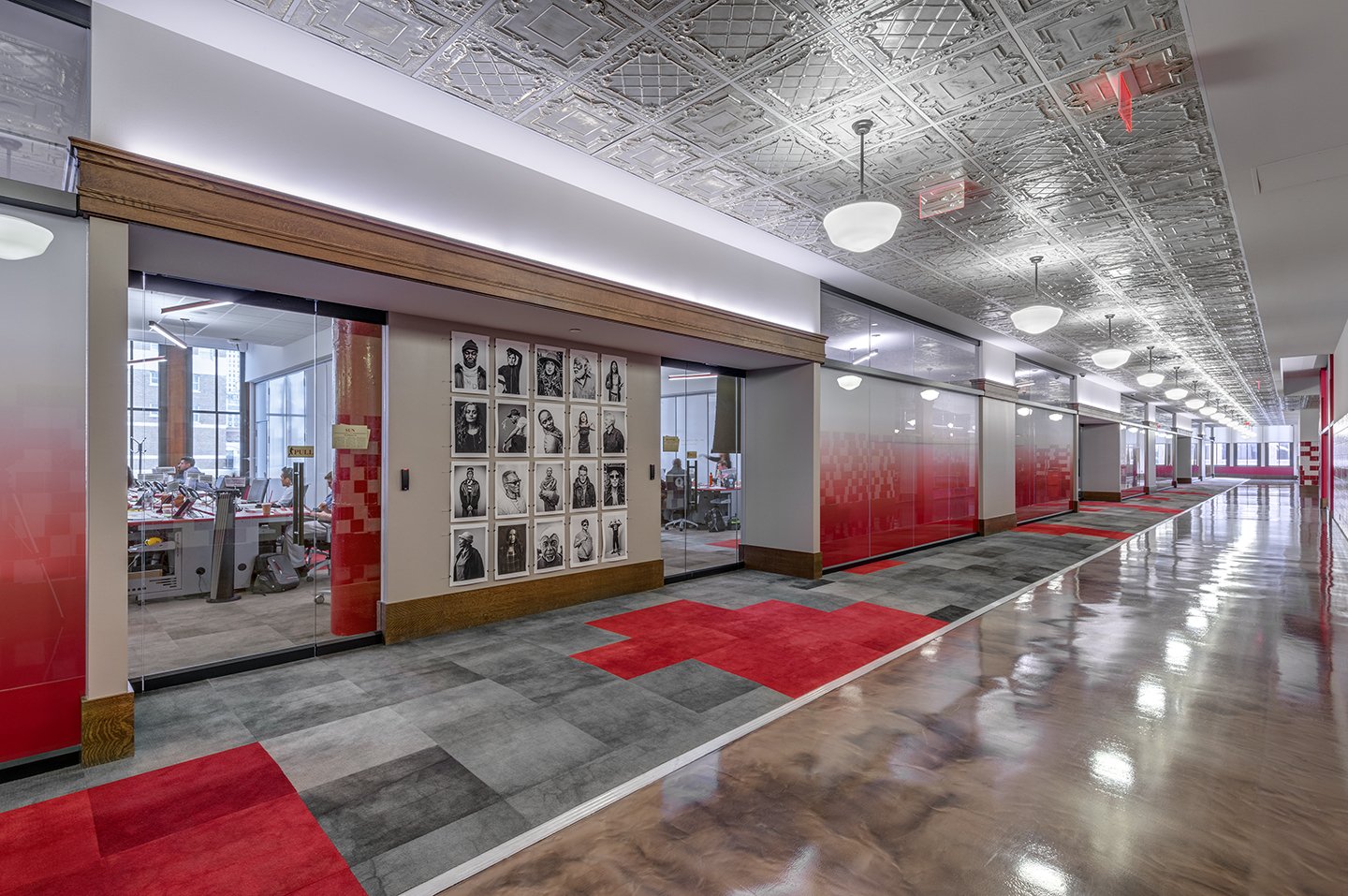
Detroit News Building
Detroit, Michigan
Adaptive reuse of an iconic Albert Kahn building
One hundred years later, Albert Kahn Associates once again began work on the iconic Detroit News Building. This time, leading the renovation and restoration of the former news headquarters to accommodate new owners and a new generation of collaborative workers.
Originally constructed for the Detroit News, the building housed the newspaper from its opening in 1917 until 2014. Once it was finished, the Detroit News Building was believed to be the largest newspaper plant in the world. On the exterior, four statues of significant historical figures that revolutionized the printing industry are prominently displayed including Johannes Gutenberg, William Caxton, Christophe Plantin, and Benjamin Franklin. There are panels between the statues that serve as a reminder for all those that enter and pass by the building that the news exists for the people, “a light shining into all dark places.”
The first floor of the building featured shipping and storage areas and housed the plant’s pressroom, featuring numerous printing presses that printed, cut, folded, and counted the newspapers, all of which was visible to the public through the large windows. On the floors above, hundreds of employees worked to write, set, and edit the paper each day. The fifth floor originally featured a long roof monitor to let in natural light, which was later removed as a sixth floor was added.
As the world of media changed, the facility underwent changes to the original configuration of the building, some of which, unfortunately, hid or destroyed the building’s architectural details. Kahn brought many of the original details back to the forefront of the design. New ornamental elements were installed to replicate the original barrel vaults and period ornamentation as closely as possible. A new data center was placed where the printing presses once stood. The exterior façade was restored, and the building was brought up to modern codes. Open workspaces were designed for new tenants, and building systems were redesigned to meet the needs of current occupants and provide considerable operational savings.








